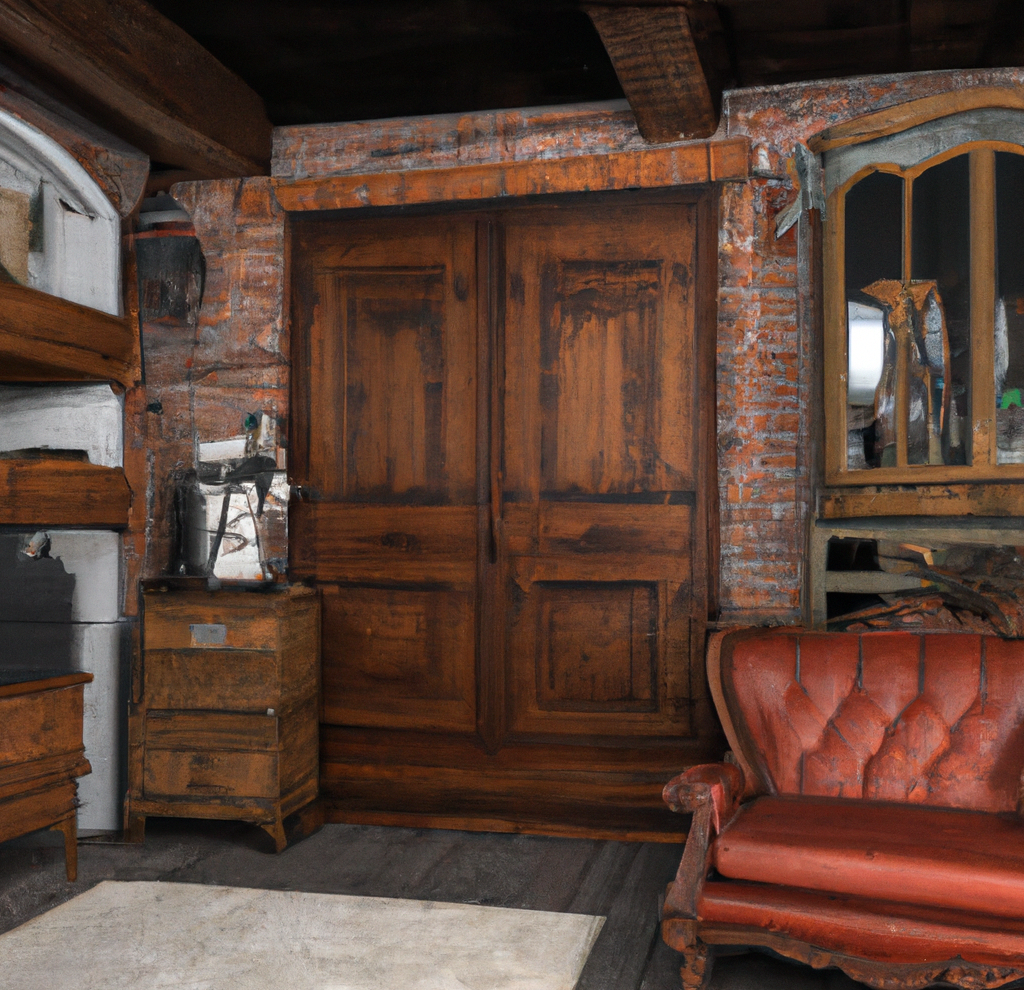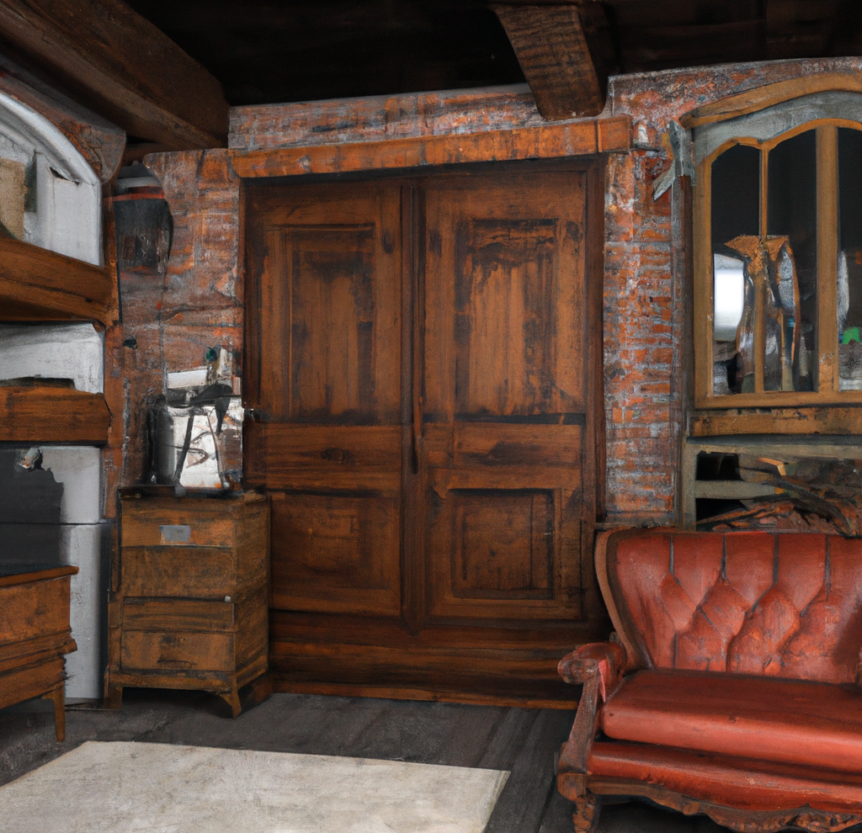Beginner’s Guide to Starting an Online Antique Furniture Store Directly From Your House

If you have a passion for antique furniture and an eye for spotting hidden gems, selling antique furniture from home can be an enjoyable and profitable side business. With the rise of online selling platforms, it’s easier than ever to turn your hobby into a steady income source without leaving your house.
Selling antiques from home lets you set your own schedule, pick your specialty focus areas, connect with fellow enthusiasts, and continually hunt for treasured pieces before reselling them to buyers who will appreciate them as much as you do. While selling antiques takes effort and learning, the ability to monetize your knowledge, passion, and eye for design into a personal income stream makes it incredibly rewarding.
This detailed guide aims to provide aspiring antique furniture sellers everything needed to evaluate if selling vintage furniture online is a good personal fit, and if so, how to start your venture successfully right from your own home.
I’ll draw on my own extensive experience buying and selling antique furniture online to outline step-by-step tips ranging from essential education and sourcing, to pricing, photographing, listing, shipping, customer care, and more.
Whether you’re new to the world of antiques or looking to take your current selling to the next level, use these steps to start selling antique furniture online directly from your residence. Let’s begin!
Step 1: Thoroughly Educate Yourself on Antique Furniture
Before listing your first piece for sale, it pays to rigorously build up your knowledge of antique furniture. Study the defining features of different furniture styles and time periods so you can accurately identify and date pieces at first glance. Focus in particular on learning how to spot authentic antiques versus convincing modern reproductions.
Sites like Antique Trader, specialty reference books like Miller’s Antiques Encyclopedia, and expert furniture blogs are great resources to tap into. Beyond general education, read extensively about your specific focus areas, like chairs, cabinets, tables, or accessories, to become a subject matter expert.
It’s also extremely helpful to actively follow antique furniture groups and forums online. This lets you stay on top of subtle trends in the market and see exactly what fellow antique enthusiasts are looking for month to month. As your knowledge grows through ongoing education, you’ll get better and better at accurately valuating furniture and setting fair market asking prices.
Related articles:
- 10 Best Vintage Danish Furniture Brands of the 1960s and 1970s
- How to Identify Georgian Furniture (1714-1830)
- How To Identify Mid-Century Modern Furniture
- 15 Best Places To Sell Vintage Furniture
Step 2: Source Truly Quality Antique Furniture
To find genuine antiques in great condition to sell, look for them for them in tried and true sources like estate sales, auctions, thrift stores, antique malls, and classified ads. Don’t overlook yard and garage sales either – these can turn up hidden finds passed over by less discerning buyers.
When sourcing, focus your search on pieces made by renowned antique furniture brands known for their craftsmanship and quality, including names like Ethan Allen, Stickley, Heywood Wakefield, Henredon, and Kent Coffey. Seek out other less-known but respected American makers from the period too.
Aim to find furniture in good, intact condition, without the need for repairs or refinishing. Quality solid wood pieces like oak, teak, walnut, and mahogany from the Mid-Century Modern period of the 1940s–60s often sell quite well online. Be highly selective and only choose furniture with timeless style, durable construction, and visible signs of fine craftsmanship. These types of pieces will be easier to resell online later.
Related articles:
Step 3: Key Considerations for Selling Antique Furniture From Home
Making the move to selling antiques directly from your home takes research, preparation, and planning. Here are some of the most important considerations when selling vintage furniture from your own residence:
- Have a Dedicated Workspace – First and foremost, you need an organized workspace with enough room to comfortably photograph, process, pack, and temporarily store your antique furniture inventory. This could be a spare room, basement, garage, shed, or even an enclosed porch. Make sure there is ample space to easily maneuver and position bulky pieces for photographing. Ensure proper lighting too – bright natural daylight is best.
- Organize Inventory – Invest in some heavy-duty secondhand shelves, racks, and storage bins to neatly organize and separate your various antique furniture pieces when they are not actively listed for sale online. This keeps everything easily accessible and protected from damage when needed again. Consider covering furniture with moving blankets or furniture covers between use.
- Photography Setup – Pick up a few neutral-colored canvas backdrop sheets to create a consistent, seamless look for your product photos. Backdrops remove background distractions and clutter so the furniture really pops in images. Arrange consistent lighting as well – natural sunlight near windows works great.
- Shipping and Packaging Materials – Have ample packing blankets, bubble wrap, cardboard boxes, furniture pads, and furniture dollies on hand to securely wrap and pack antique items so they arrive undamaged after shipping across the country. You’ll be amazed what a couple furniture pads and some creative angled wrapping with moving blankets can protect!
- Comfortable Processing Area – You will likely spend many consecutive hours photographing, cataloging, listing, communicating with buyers, packing furniture, and printing shipping labels, so set up an ergonomic work area. Have a laptop, smartphone, printer, packing materials, tools, tape, marking pen, and all other supplies nearby and organized. An adjustable chair with lumbar support will keep you going.
- Time Management – Running an antique furniture-selling business from home takes considerable time sourcing, cleaning, photographing, listing, and shipping inventory. Expect to put in 20+ hours a week. Set up a master schedule and block off dedicated windows of time for your antique selling work like Tuesday and Thursday mornings for photographing new finds. Schedule evenings and weekends for customer correspondence and packing/shipping which is when 9-5 buyers are generally home and available.
- Receiving Deliveries – Since you are running your business from home, you’ll need to be available to receive occasional furniture returns, damages, and seller-fulfilled orders back from buyers. Try to schedule the bulk of pickups on Saturdays or days you are already home. Factor in some weekday morning flexibility though just in case.
- Safety First – Take standard precautions when allowing strangers onto your property, like meeting local pickup customers right outside rather than inviting them in. Require IDs and only accept established payment methods to avoid fraud. Let a family member know whenever you are expecting someone. Setup video doorbells and exterior lighting for some added protection.
Step 4: Carefully Research and Price Your Pieces
Before listing any piece of antique furniture for sale online, first invest sufficient time researching current market rates and auction sale prices to accurately set an optimal asking price. Search closed and completed eBay listings and Etsy sold listings to see what comparable items have sold for recently.
Carefully factor in the piece’s age, style, materials, condition, relative scarcity, known brand name, and other attributes. For example – is it a truly rare design or a more common mass-produced item? Is the piece in pristine condition or does it require some minor cosmetic repairs and refinishing?
Aim to initially price just below similar antique comparables that have already sold online to help your piece stand out in buyer search results. You can always gradually lower your price in 10% increments later if needed to spur interest. Use Google Shopping and Amazon price-checking tools to make sure you list well below any identical items currently for sale new from commercial retailers.
Step 5: Professionally Photograph and Describe the Furniture
Invest significant time staging and capturing a complete professional-level set of photographs for each antique piece, as great imagery tremendously boosts perceived value and a sales response. For large furniture, photograph from multiple complimentary angles in bright natural lighting. Zoom in for detailed close-ups of any identifying labels, markings, signatures, or minor damage as well.
Write concise but highly detailed titles summarizing the key characteristics and highlight important keywords buyers search for like furniture style, materials, brand, age, dimensions, and condition. Use all available character spaces – detailed titles stand out.
In the description, note any specifics on originality, previous repairs, current condition issues, construction methods, and materials. Call out measurements, weight, pickup logistics, shipping options, and other vital purchase details. The more detail provided, the more buyer trust you build. Total upfront honesty is essential when selling antiques!
Related articles:
Step 6: List Your Furniture for Sale on Multiple Platforms
Once fully researched, photographed, and detailed in descriptions, list antique furniture simultaneously across selling platforms like eBay, Etsy, Facebook Marketplace, OfferUp, Chairish, 1stDibs and Rubylane to maximize visibility.
eBay’s immense global reach is ideal for rare and highly valued pieces you can carefully ship. For bulkier less fragile items better suited to local pickup, list locally on Facebook Marketplace, NextDoor, and Craigslist as well. Consider aside high-value rarities for reputable niche auction houses like Hindman, Wright, and Rago Auctions too.
No matter where listed, always use clear well-lit photographs and take advantage of all available listing optimization and promotion options on each platform. Refreshing listings frequently keeps you at the top of search results and feeds. Promote particularly exciting new additions proactively on your social accounts as well.
Step 7: Price with Some Flexibility to Negotiate
Especially when selling more general vintage furniture on Craigslist and Facebook Marketplace, subtly overprice items a little above your minimum acceptable amount to leave comfortable room for buyers to negotiate discounts. Decline unreasonably lowball offers politely but firmly.
If an honest buyer makes a reasonable offer and no one else has been interested for a few weeks, consider accepting 10–20% price drops on pieces you have more margin flexibility with. But stick firmly near your listed price for prized, rare, and highly valued inventory; know what is irreplaceable versus more common.
Step 8: Carefully Handle Payment Collection and Shipping
For any antique furniture sold online, always require immediate PayPal or credit card payment in full upfront before physically shipping the item. Never ship any piece until payment is received and verified – this saves major headaches down the road.
Painstakingly pack fragile antiques in multiple layers of bubble wrap, moving pads, and cardboard lined with added interior support structures. Invest time and materials into careful wrapping – damage claims must be avoided at all costs. Fully insure high-value shipments.
For local sales, accept cash only upon buyer pickup. Never let a piece leave until cash is in hand. Move fragile items outdoors yourself – make the buyer responsible for final loading and transport. For truly high-value items, have the buyer sign a bill of sale acknowledging receipt in the stated condition.
Step 9: Provide Top-Notch Customer Service
Even beyond exhaustive listing details, proactive communication is key when selling antiques. Courteously answer all buyer questions thoroughly before purchase and keep buyers updated on shipping timelines after purchase as well. Resolve any minor issues promptly and fairly.
Follow up post-delivery to confirm the buyer’s satisfaction and that the antique piece arrived intact as described. If a rare dispute does arise, calmly negotiate an amicable solution, which may involve accepting a return. Protecting your reputation is paramount in antique sales.
Leave positive feedback immediately once an honest buyer with reasonable expectations makes their payment. Your goal is to encourage repeat business by providing the same outstanding buying experience you would hope to receive. Prioritize customer service just as highly as listings themselves.
10 Advanced Tips for Antique Furniture Selling Success
Beyond the detailed steps above, applying these additional advanced tips will set you up for continued growth and profitability when selling antique furniture online from home:
- Focus exclusively on quality over quantity. Remain highly selective and choose only true antique furniture in good intact condition with timeless design.
- Start niche and specialize in furniture eras or brands with avid collector followings like mid-century, Art Deco, or mission oak furniture, to command higher prices.
- Routinely use Google Trends and eBay pulse research to identify rising and declining antique furniture niche markets before sourcing.
- Refresh your e-commerce listings weekly to keep pieces prominently atop search feeds as buyers see latest listings first.
- Maintain an active social media presence linking to newly listed rare feature pieces driving interested followers to your online listings.
- Develop a discerning eye for spotting collectible furniture that other buyers have undervalued during your sourcing runs. This takes study but maximizes profit margins.
- Capture all existing wear, repairs, splits or other damage accurately in photos and descriptions to head off complaints of undisclosed flaws.
- Personally follow up with and answer any communications from buyers promptly from first inquiry through post-sale.
- Invest in professional quality shipping materials like real wood crates and thick premium foam for added protection on fragile shipments.
- For bulkier less fragile pieces, offer discounted local pickup with flexible evening and weekend appointment times to save the buyer shipping costs.
Conclusion
With the right combination of antique expertise, marketing skills, passion, and customer care – selling vintage furniture sourced locally and resold online directly from your home can transform from a hobby into a significant income stream.
Use this guide to start your own antique furniture-selling journey from home. Remember to begin small-scale as you build experience, and continually reinvest earnings into expanding and improving your sourcing, photography, listings, knowledge, and reputation.
If you gain deep first-hand knowledge and appreciation for antiquities over time, connect authentically with fellow enthusiasts, focus relentlessly on customer satisfaction, and take pride in finding underappreciated gems – selling antique furniture online from your residence can provide not only financial gain but immense personal fulfillment as well.
I wish you the very best as you embark on an exciting new venture selling quality antiques to buyers near and far who will treasure them for generations to come! Feel free to reach out if you have any other questions at all getting started down this rewarding path.


